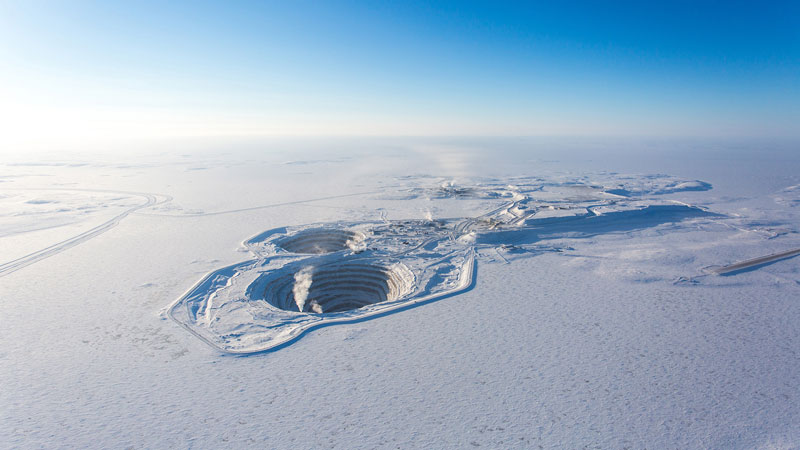An unusually warm Canadian winter delayed the opening of a 400-kilometer ice road that is reconstructed every year to access several diamond mines in the remote Arctic region, reported Reuters.
The news agency said the Winter Road opened with a two-week delay in February, the longest delay in recent years, disrupting movement of goods. While diamond production remains unaffected, the delay underscores the challenges that miners face in the region.

It also highlights, noted Reuters, the infrastructure hurdle for the Northwest Territories and Nunavut that are positioning themselves as the next frontiers in the exploration of critical metals. The Winter Road, which costs C$25 million to operate for two months, is jointly shared by Burgundy Diamond Mines, Rio Tinto and De Beers, which run the Ekati, Diavik and Gahcho Kue diamond mines, respectively.
The region is facing the complete closure of all the diamond mines by 2030 and is looking for ways to keep mining alive. The lack of infrastructure is a challenge and the shortened seasonal use of the ice road could hurt investments needed to mine critical minerals.
“If you’re in the exploration phase … and looking at using the Winter Road as part of your core business model, the risks start to come into … your decision making whether or not to advance a project,” said Paul Gruner, CEO of Tlicho Investment Corp & Group of Companies.
Mining groups are pushing for a mega infrastructure project that connects NWT to Nunavut. At least 23 of the 31 critical minerals listed by the Canadian government are found in the NWT.
“When the project comes up, it would replace the roads that have served mining for 40 years, but until that happens, the ice roads are required,” said Tom Hoefer, senior advisor to the NWT and Nunavut Chamber of Mines.
Source: Reuters
